The construction industry has long been linked to issues of forced labor and carbon emissions—but this is slowly changing. Partially to blame is the scale of the built environment; the construction industry accounted for over 13 percent of global gross domestic product and nearly 40 percent of carbon emissions (28 percent from operations emissions and 11 percent from materials and construction). According to an International Labour Organization report published in 2022, a vast web of contractors and fabricators, numbering at least 200 million globally, support the construction industry; and, while a precise figure is difficult to nail down, a significant share of the 28 million people worldwide suffering under forced labor conditions, and over 150 million subject to child labor, form a shadow economy subsidizing the sprawling sector.
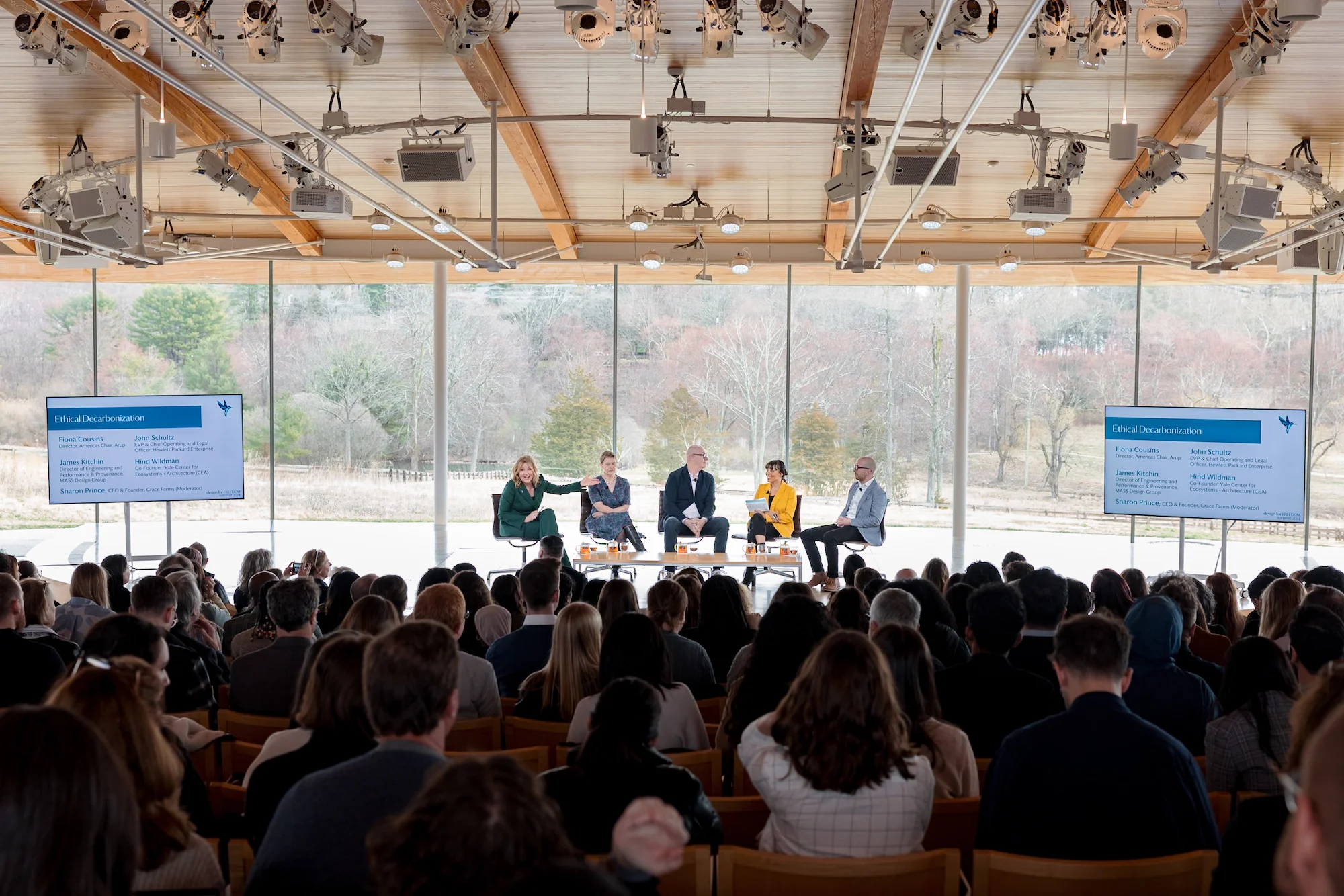
Sharon Prince, Grace Farms CEO, moderates a panel on ethical decarbonzation. Photo © Jacek Dolata
Founded in 2017 by Grace Farms Foundation founder and CEO Sharon Prince and the late Architect’s Newspaper co-founder and editor-in-chief Bill Menking, the Design for Freedom (DFF) initiative seeks to tackle this epidemic of exploitation by rallying architects—along with contractors and engineers as well as financial institutions—to ethically source materials and labor for projects of myriad scales and geographies. To that end, on March 26, over 550 design professionals, and those related to the field, gathered at the New Canaan, Connecticut headquarters of Grace Farms—the SANAA-designed River Building—for the third annual Design for Freedom Summit.
The summit commenced with a keynote by Lisa Kristine, an activist photographer and founder of the Human Thread Foundation, an organization that shines a light on forms of human trafficking though awareness campaigns and interactive exhibitions. The keynote, grounded in Kristine’s prodigious body of work, highlighted stories of debt bondage, and other kinds of exploitation, that mire generations in perpetual servitude within the recesses of global supply chains.
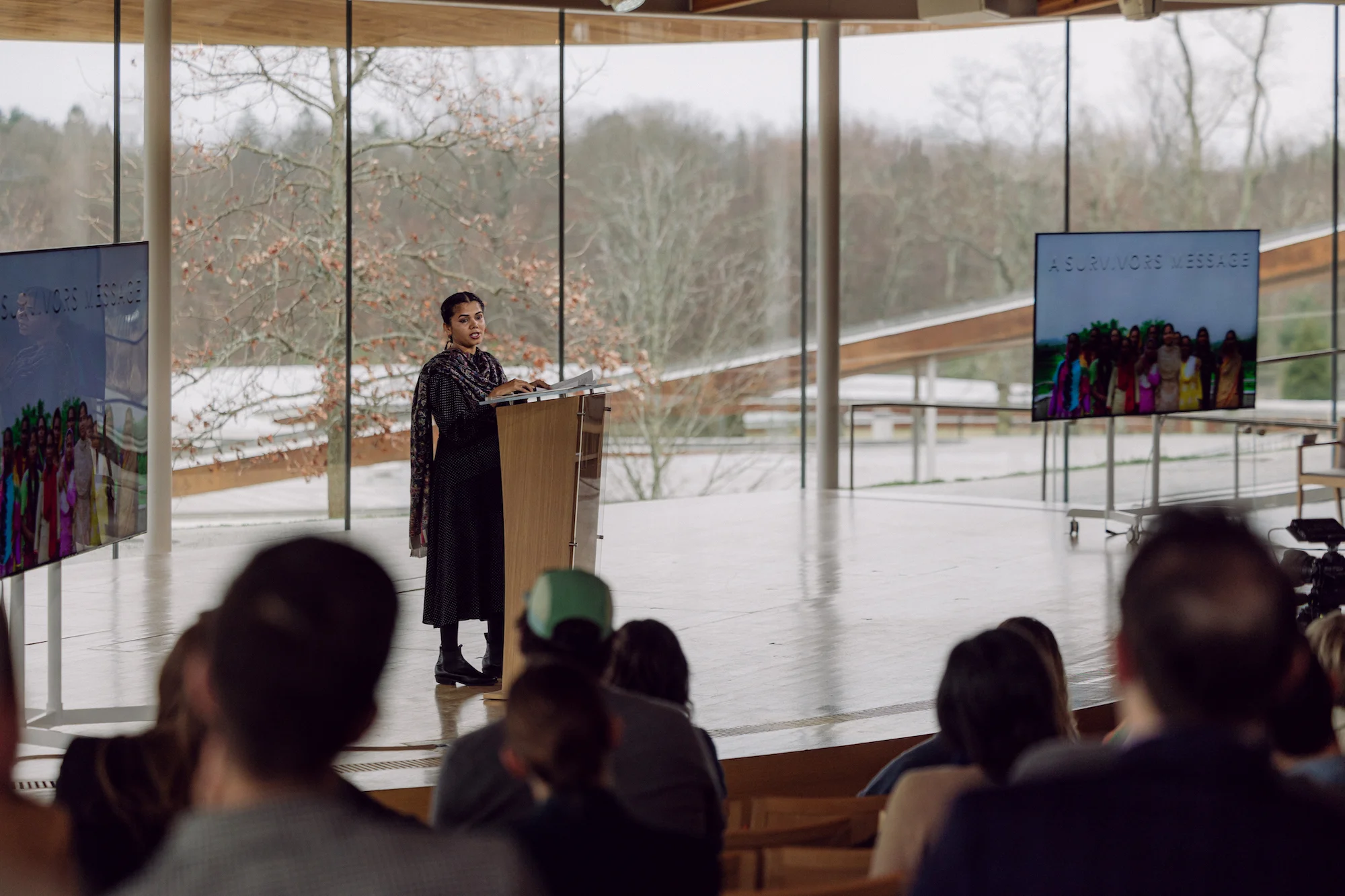
Keynote speaker Nasreen Sheikh speaks to her experience as a survivor of modern slavery. Photo © Jacek Dolata
The keynote was a fitting introduction to the summit’s first panel, “Realizing the Just Transition,” moderated by Nora Rizzo, ethical materials director at Grace Farms, with panelists Leonardo Bonanni, CEO and founder of Sourcemap; Tim Conway, vice president of sustainability at Shaw Industries; and Claire Weisz, principal-in-charge at WXY architecture + urban design. The conversation centered on the growing awareness of forced labor at stages across project delivery, and the expansion of what practitioners view as their responsibility. Now, with the help of evolving technologies and data analysis tools, architects have the capacity to more effectively determine the fair labor practices of material specifications to ensure that projects are, to the best of their ability, free of exploitative sources, such as prison labor.
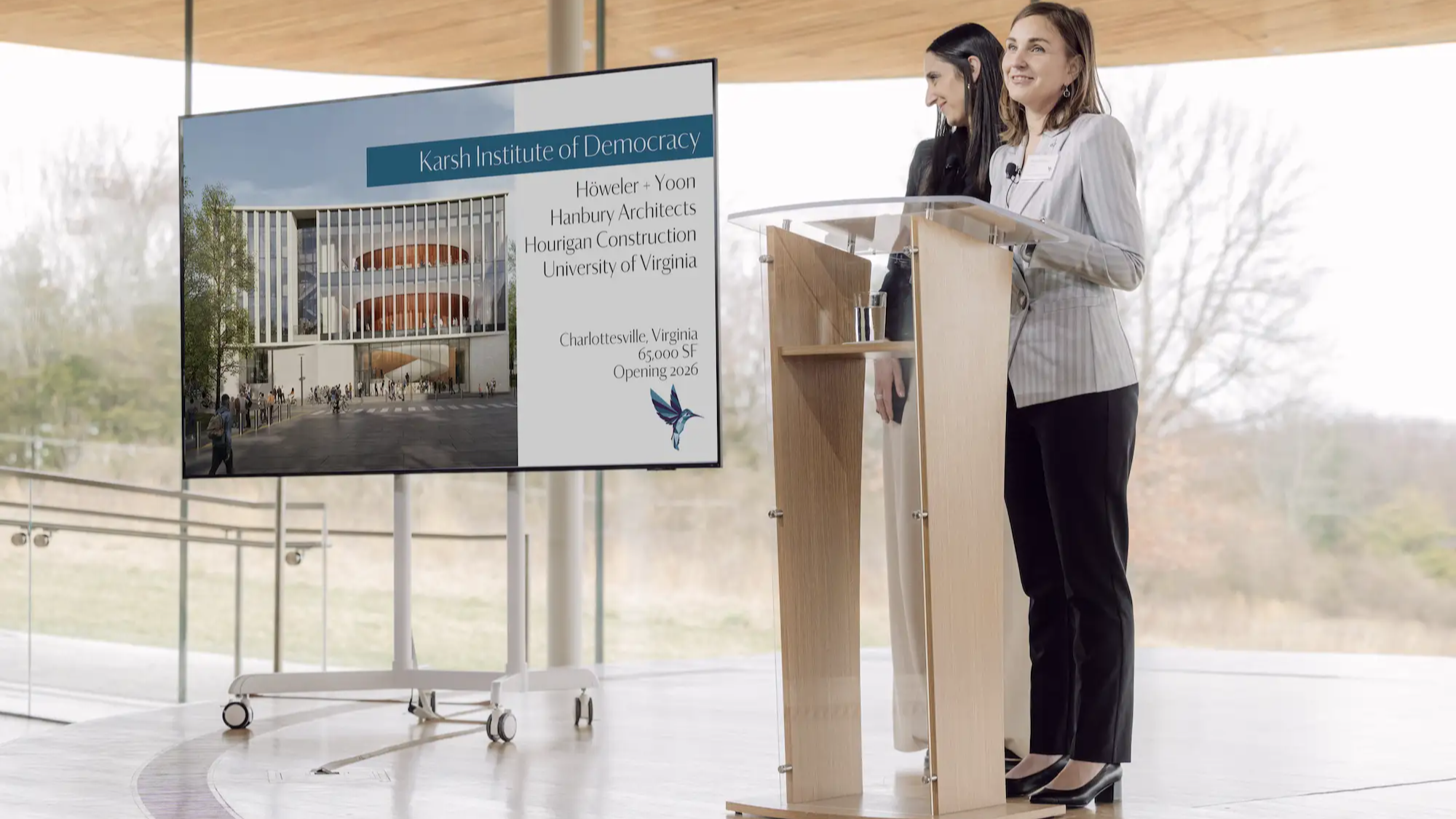
1
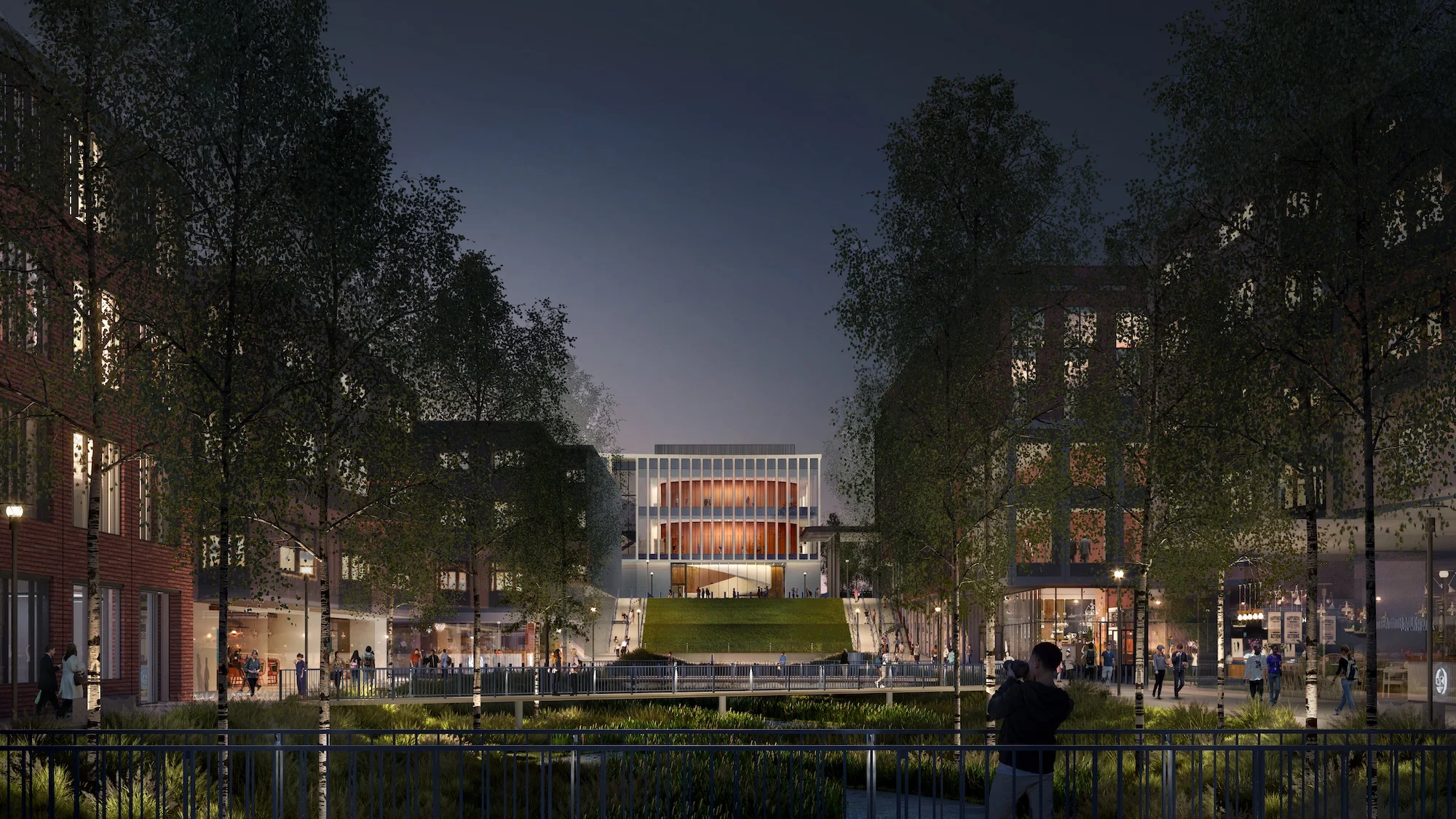
2
Pilot project announcement with Nora Rizzo (left), ethical materials director at Grace Farms, and Brigid Abraham, Design for Freedom project manager (right) (1); rendering of Karsh Institute of Democracy at UVA, one of five newly announced DFF Toolkit pilot projects (2). Photo © Melani Lust (1); image courtesy Höweler+Yoon (2)
The second panel of the day, “Ethical Decarbonization,” was moderated by Prince and included Fiona Cousins, director at Arup and chair of the global engineering giant’s Americas group; James Kitchin, director of engineering, performance, and provenance, at non-profit architecture studio MASS Design Group; John Schultz, EVP and chief operating and legal officer for Hewlett Packard Enterprise; and Hind Wildman, director of communications and development for the Yale Center for Ecosystems + Architecture. The panelists discussed several poignant issues in the current race to decarbonize, namely growing energy demands associated with the rapidly growing IT sector, which Schultz expects to double to approximately 12 percent of total energy usage with the proliferation of AI technologies. That topic dovetailed with Cousins’s concerns regarding generalizations in operational carbon, and whether sufficient infrastructure is in place to support building electrification at planned scales. The panelists also noted that the present concentration of solar panel manufacturing in Uyghur forced-labor camps in the Chinese province of Xinjiang requires an extra layer of scrutiny for electrification policies.
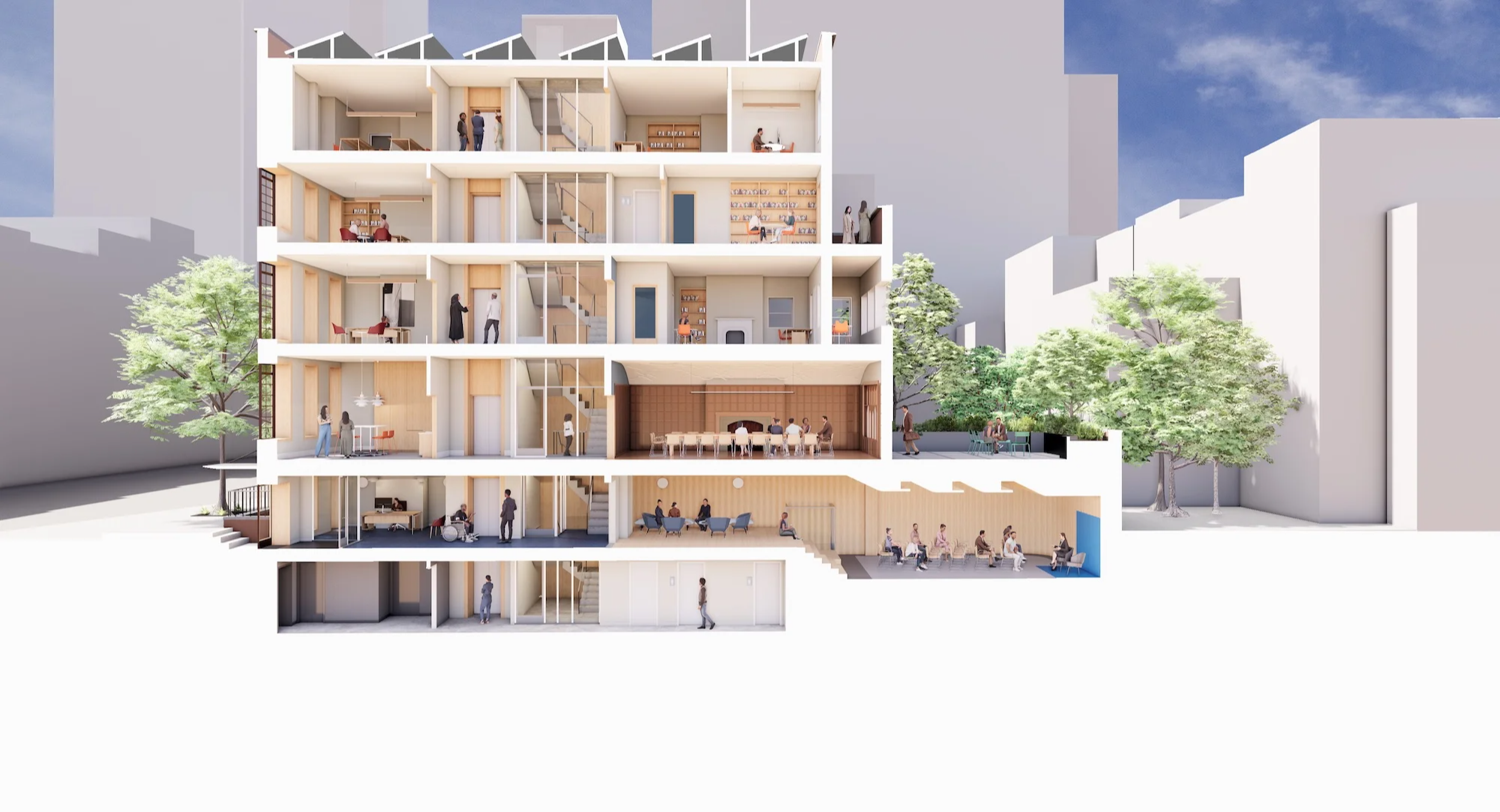
3
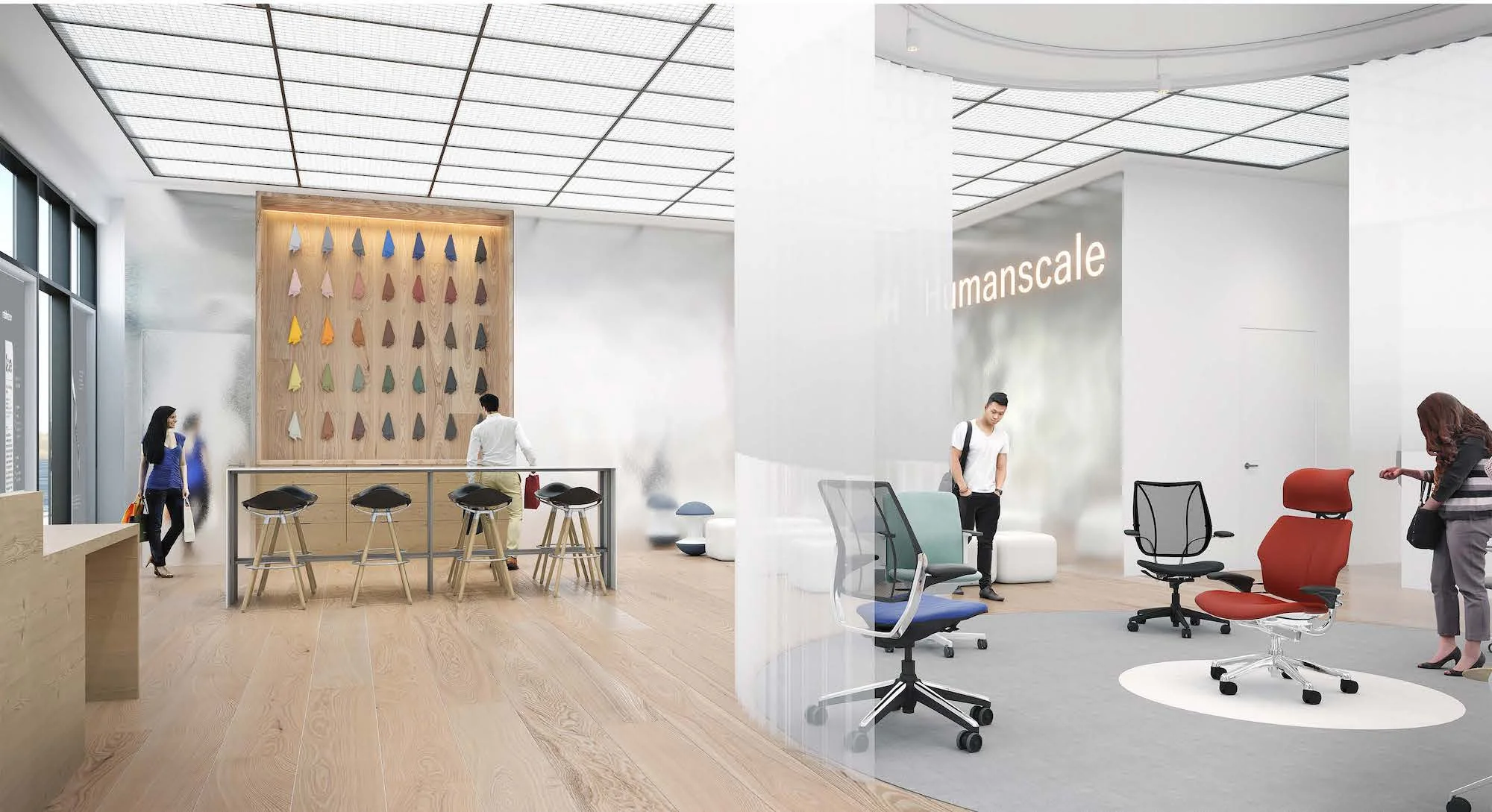
4
DFF Toolkit pilot projects Carnegie Global Ethics Hub (3) and Humanscale showroom in Chicago (4) Images courtesy MBB Architects and Carnegie Global Ethics Hub (3), Humanscale (4)
The afternoon saw the attendees join numerous breakout sessions of roundtables, conversations, and lectures, which covered similar themes to the panels, albeit in more detail, before returning for the announcement of five new pilot projects that will utilize the DFF Toolkit to source forced-labor-free materials. The projects include the Karsh Institute of Democracy at the University of Virginia, designed by Höweler+Yoon and Hanbury Architects; a new facility for Dallas-based non-profit Hunger Busters designed by HKS; the MBB Architects–designed Carnegie Global Ethics Hub in Manhattan; a Chicago showroom for office furniture manufacturer Humanscale, designed by Suchi Reddy of Reddymade Design; and Cushing Terrell’s ImagineIF Library in Bigfork, Montana.
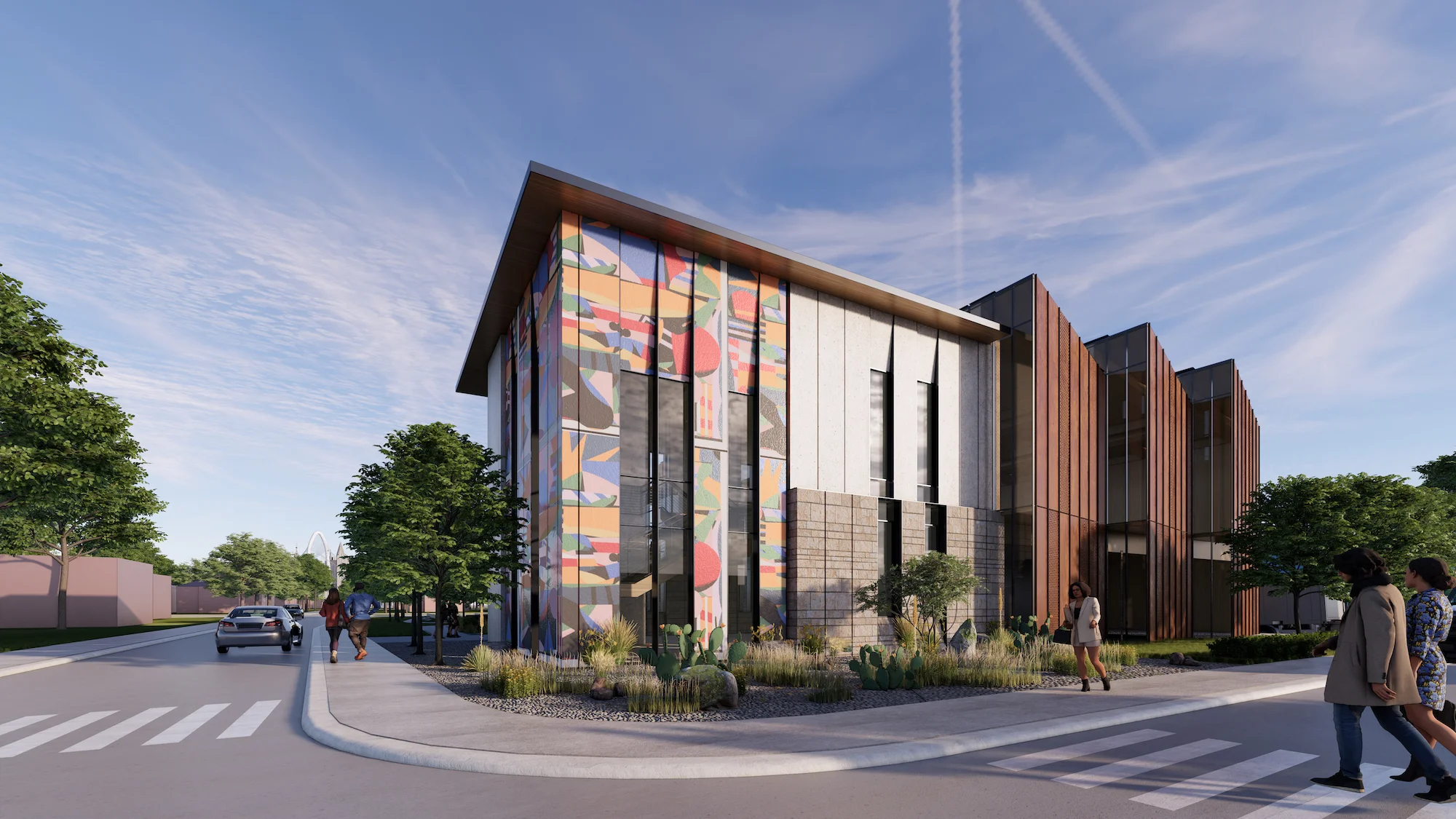
5
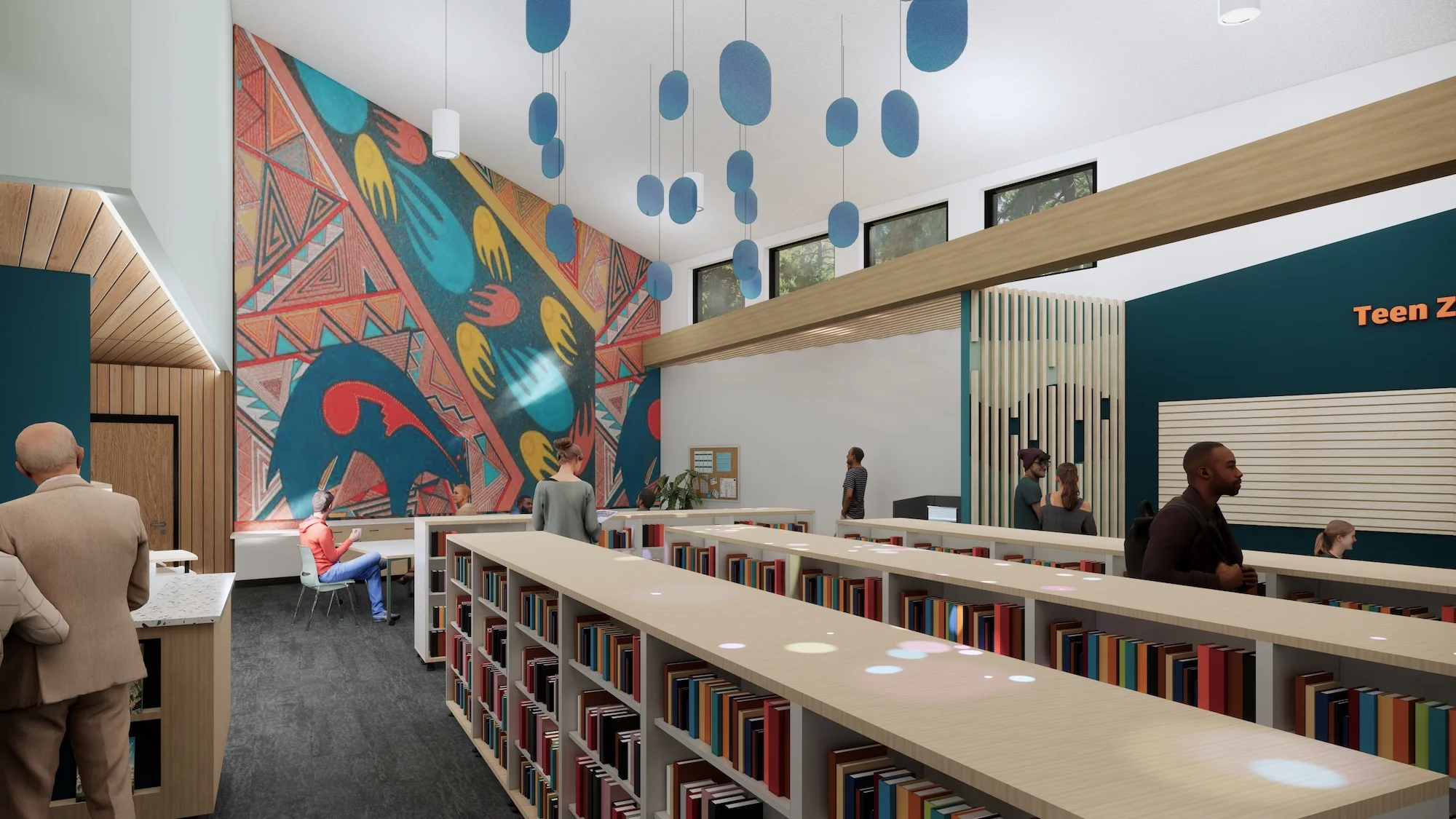
6
DFF Toolkit pilot projects Hunger Busters (5) and Bigfork Library (6). Images © HKS (5), Cushing Terrell (6)
The final panel, “The Financial Case Against Forced Labor,” moderated by Grace Farms senior program officer Karen Kariuki, brought together Preeti Bhattacharji, head of sustainable investing with JP Morgan Chase; Maha Khan, financial sector lead, financing against slavery and trafficking at United Nations University; Ed Marcum, managing director, World Capital Fund; and Dave Wildman, global head of facilities at Bloomberg. The panelists discussed mechanisms that their respective institutions are enacting to root out investments in forced labor. Also explored were trends and strategies in the field such as the merits of impact investing and the barring of firms or corporations recognizing capital impairments resulting from associations with labor exploitation.
The summit concluded with a keynote from Nasreen Sheikh, who spoke of her own experience with modern slavery as a textile worker in Nepal; the conditions that breed exploitation; and the ongoing work of Chicago nonprofit, Empowerment Collective, to elevate the voices of the enslaved and promote women-led textile cooperatives. Confronting forced labor in construction is a herculean effort, but, if anything, the DFF Summit—as with at past gatherings—shows that there are actionable tools to ameliorate, and hopefully remove, this shadow economy from the building industry.



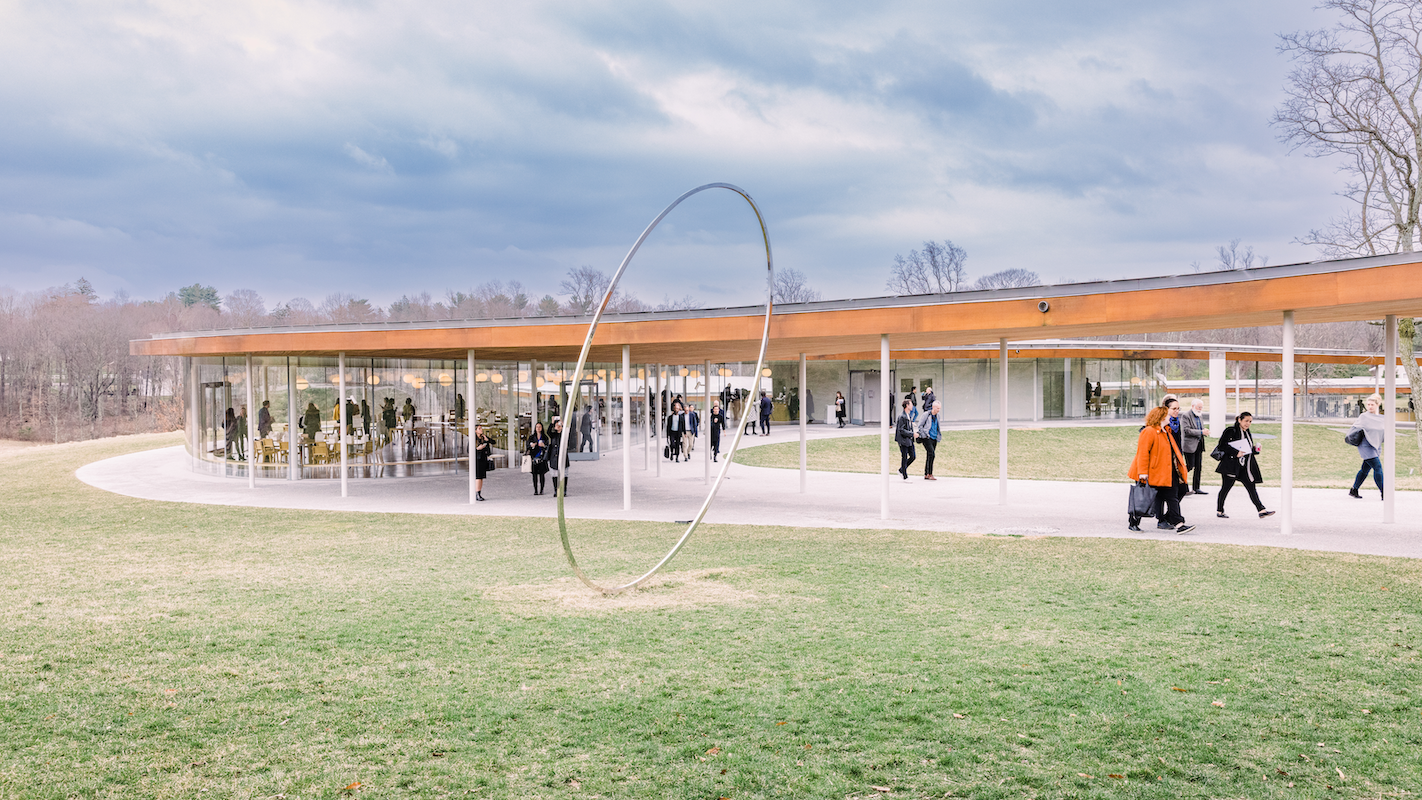

Post a comment to this article
Report Abusive Comment